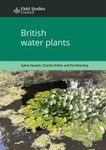![Aquaculture Genome Technologies Aquaculture Genome Technologies]()
Click to have a closer look
About this book
Contents
Customer reviews
Biography
Related titles
About this book
Genomics is a rapidly growing scientific field with applications ranging from improved disease resistance to increased rate of growth. Aquaculture Genome Technologies comprehensively covers the field of genomics and its applications to the aquaculture industry. This volume looks to bridge the gap between a basic understanding of genomic technology to its practical use in the aquaculture industry.
Contents
Preface Foreword Chapter 1. Concept of genome and genomics Part 1: Marking Genomes Chapter 2. Restriction fragment length polymorphism (RFLP) Chapter 3. Randomly amplified polymorphic DNA (RAPD) Chapter 4. Amplified fragment length polymorphism (AFLP) Chapter 5. Microsatellite markers and assessment of marker utility Chapter 6. Single nucleotide polymorphism (SNP) Chapter 7. Allozyme and mitochondrial markers Chapter 8. Individual-based genotype methods in aquaculture Chapter 9. Application of DNA markers for population genetic analysis Part 2: Mapping Genomes Chapter 10. Linkage mapping in aquaculture species Chapter 11. Detection and analysis of quantitative trait loci (QTLs) for economic traits in aquatic species Chapter 12. Marker Assisted Selection for Aquaculture Species Chapter 13. Construction of large-insert bacterial clone libraries and their applications Chapter 14. Bacterial artificial chromosome libraries and BAC-based physical mapping of aquaculture genomes Chapter 15. Physical characterization of aquaculture genomes through BAC end sequencing Chapter 16. Genomescape: characterizing the repeat structure of the genome Chapter 17. Genomic analyses using fluorescence in situ hybridization Chapter 18. Radiation hybrid mapping in aquatic species Chapter 19. Comparative Genomics and Positional Cloning Part 3. Analysis of Genome Expression and Function Chapter 20. Transcriptome characterization through the analysis of expressed sequence Chapter 21. Microarray fundamentals: Basic principles and application in aquaculture Chapter 22. Salmonid DNA microarrays and other tools for functional genomics research Chapter 23. Computational challenges for the analysis of large datasets related to aquatic environmental genomics Chapter 24. Functional genomics Part 4. Preparing for Genome Sequencing Chapter 25. DNA sequencing technologies Chapter 26. Sequencing the genome Chapter 27. Bioinformatics Part 5. Dealing with the Daunting Genomes of Aquaculture Species Chapter 28. Dealing with duplicated genomes of teleosts Chapter 29. Bivalve genomics: complications, challenges, and future perspectives
Customer Reviews
Biography
Zhanjiang (John) Liu is a Distinguished Alumni Professor, Department of Fisheries and Allied Aquacultures and Program of Cell and Molecular Biosciences, and Director, Aquatic Genomics Unit at Auburn University.
By: Zhanjiang John Liu
551 pages, diagrams, tables
A good and comprehensive overview of the principles of genomic tools ... .[It] will be an important reference for quite some time, and I welcome its arrival. (Aquaculture International, August 2008) "Aquaculture Genome Technologies is the quintessential What, When, Why and How-to book for aquatic genome research...an important addition to any science classroom, laboratory or office." (Aquatic Association of Canada Newsletter) "This most impressive text tells very clearly and comprehensively how and why." (Ausmarine)




















![Coraux Constructeurs de Récifs des Caraïbes [Coral Reef Builders of the Caribbean]](http://mediacdn.nhbs.com/jackets/jackets_resizer_medium/24/249211.jpg?height=150&width=99)














